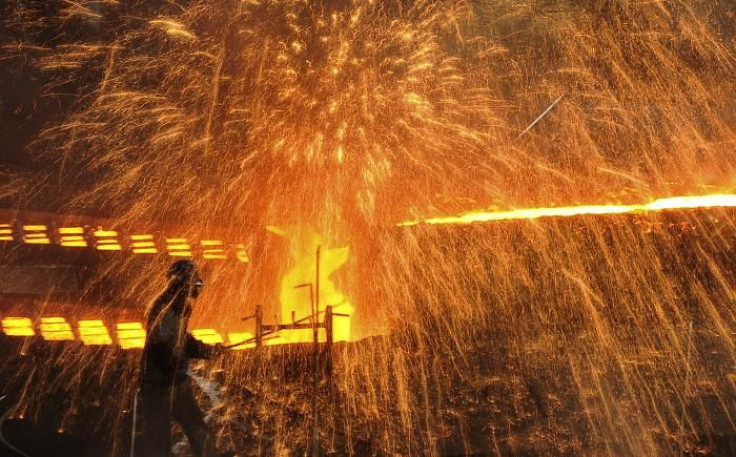China's Economic Recovery Faces Considerable Challenges

Chinese November economic data, published over the weekend, painted a picture of a gradual recovery that is still struggling to take shape.
China's trade weakened sharply in November, adding to doubts about the sustainability of its recent rebound. While figures on investment and industrial production were more encouraging, they underlined that recent strength has been driven by infrastructure spending rather than a broad-based pick-up across the economy.
Export growth plunged to 2.9 percent over a year earlier from October's 11.6 percent, customs data showed Monday. Imports were flat, down from October's 2.4 percent growth, which suggests that China’s domestic recovery is faltering. Imports have missed expectations for six consecutive months.
The figures were in line with analysts' warnings that a trade rebound that began in August was unsustainable due to sluggish global demand. Europe and Japan are struggling with recession, while the U.S. is facing a looming “fiscal cliff” that could tip the economy back into recession.
In the first 11 months, China's exports and imports grew 5.8 percent from a year earlier, running well below a government 2012 target of 10 percent.
“Weak exports growth is expected to stay with us for a while longer, with strong external headwinds from Western demand persisting,” writes HSBC China Economist Ma Xiaoping. “Beijing needs to maintain its accommodative policy stance if China's growth recovery is to be sustained in the coming quarters.”
Sunday's inflation report showed China's consumer price index rose 2 percent in November from a year ago, accelerating from 1.7 percent in October. That’s still below the government’s 4 percent target for this year and provides some room for Beijing to sustain the current pro-growth policy.
Among the data highlights, industrial output growth rose a higher-than-expected 10.1 percent in November from a year earlier, the fastest pace since March and above forecasts for an increase of 9.8 percent.
Electricity production – an indicator of general activity strength – rose 7.9 percent, the strongest since December.
Growth in China's retail sales also jumped to an eight-month high in November, while the pace of fixed asset investment, or spending in such areas as bridges, factories and housing, was steady at 20.7 percent in the first 11 months. That is a concern because China’s recovery so far has been driven by infrastructure spending and little else.
China's annual economic growth slipped to 7.4 percent in the third quarter, slowing for seven quarters in a row and leaving the economy on course for its weakest showing since 1999.
Despite efforts to rebalance the economy toward domestic consumption, exports accounted for 31 percent of gross domestic product in 2011, according to World Bank data, and supported about 200 million jobs.
HSBC China Economist Sun Junwei believes Beijing will likely stick with the 2012 GDP growth target of 7.5 percent when policymakers meet at the Central Economic Work Conference (CEWC) in the next few days and set the economic targets for 2013.
“This reflects a desire to maintain policy continuity after the leadership transition and is in line with the medium-term target of quadrupling GDP and per capita GDP between 2010 and 2020,” Sun said.
Beijing had maintained a target for economic growth of 8 percent for eight years before cutting it in 2012 to 7.5 percent.
The Chinese Academy of Social Sciences, a top government think tank, projected last week in its "blue book" report on China's economy that the country’s gross domestic product growth may quicken to 8.2 percent in 2013 from an expected 7.7 percent this year.
The think tank also forecast China's inflation would rise to 3 percent next year, with export growth at 10 percent and imports up 13.7 percent during the coming year.
“In sum, having now seen most of the key releases for November, our conclusion is that the rebound is continuing but that it appears to be losing some strength,” London-based Mark Williams and Qingwei Wang at Capital Economics, wrote in a note.
“Continued acceleration would require a pick-up in investment beyond infrastructure, stronger household spending, an export recovery or further stimulus,” they added. “There is no sign of any of these happening so far.”
© Copyright IBTimes 2024. All rights reserved.












